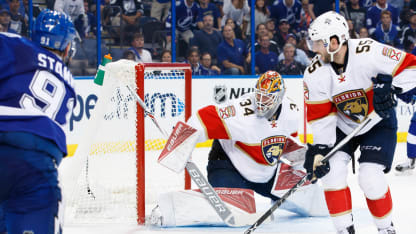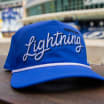As I wrote in a summer column analyzing the Lightning's schedule
, it was going to be important for the team to make the most of their season-opening four-game homestand. That's because, now that the homestand is over, the Bolts begin a long, difficult stretch in which they play 19 of their next 28 games on the road. The 28-game segment starts with Saturday's contest in Ottawa, the opener on a six-game road trip.
Mishkin's Musings: recapping the homestand
Lightning broadcaster Dave Mishkin recaps the first four games and looks at the road ahead.

So the fact that the Lightning went 3-1-0 on the homestand - and picked up six out of eight points - is a positive. And that's the most significant takeaway from the opening four. While there's no question that the next couple of months will be challenging, the Lightning greatly helped themselves by winning three of those first four.
Having written that, here are a few of some other takeaways from the homestand.
Best Game:By a wide margin, the Lightning's best overall performance came in their opening night win over Detroit. It's true that they spotted the Red Wings an early 2-0 lead and needed to rally from a 3-2 third period deficit. But in terms of flow of play, the Lightning dominated. They put on a clinic of speed and skill and much of the game was played in the Detroit defensive zone. The 6-4 final didn't tell the story of how lopsided this game was. Nor did the Lightning's modest 36-32 shot advantage. Shot attempts, on the other hand, were 74-47 in favor of the Lightning and the ratio of scoring chances was even more lopsided. If not for the spectacular goaltending of Petr Mrazek, the Lightning might have scored 10 or more goals.
Shakiest Game:Some people might suggest that the Lightning's 4-0 loss to Colorado on Thursday was their shakiest game, but I take a different tack. I don't have a "clunker" game. Instead, I think the team had two really bad periods - and neither was from the Colorado game. Their first period against New Jersey ended with the Bolts trailing, 2-0, but this period differed from the opening frame against the Red Wings. Versus Detroit, the Lightning gave up an early power play goal and surrendered another following an isolated mistake in the defensive zone. But they played reasonably well for the rest of the period (and their play only got better as the game progressed). Against the Devils, the Lightning came out flat. They were a step behind the Devils early on and yielded several scoring chances in addition to the two goals.
Their third period against Florida was the other subpar period. The Panthers rallied from 2-1 down to grab a 3-2 lead. Only Steven Stamkos' heroics in the closing seconds saved the Lightning from a regulation loss.
Against Colorado, I don't believe the Lightning struggled the way they did in those two aforementioned periods. They held the Avs to just 16 shots and kept the Colorado scoring chance total to a minimum. A 4-0 loss looks ugly, but in dissecting that game, one can see that the outcome really came down to a handful of key plays and bad bounces. Outside of those key plays and strange bounces, the Lightning's biggest issue versus Colorado was an inability to generate good looks on goalie Semyon Varlamov. Credit the Avs' team defense, which blocked 19 Lightning shots. Also, playing from behind is tough - the Lightning were able to rally in their first three games to win after falling behind, but that's a tough formula to sustain. They simply couldn't do it again in their fourth game.
Power Play and Penalty Kill:The power play scored in just one of the four games (three PPG against Detroit), but it really only had one poor game. The power play recorded five shots in three chances against both New Jersey and Colorado. Based on how they set things up, the Lightning could have scored on the power play in either one of the those games. And there were some close calls. In the latter game, for example, Nikita Kucherov hit the post during a first period power play and had another good opportunity in the second.
Against Florida, however, the Lightning's power play went 0-3 and did not register a shot. That included a two-minute four-on-three power play chance in overtime.
When the Lightning move the puck quickly and have a shooting mentality, the power play looks crisp. When they are static and, as Jon Cooper describes it, "try to pass the puck into the net", the power play appears flat. The fact that the PP has looked OK or better in three of four games is encouraging, even if it has not converted since opening night.
On the PK, the Lightning yielded a goal on the first penalty they took this season and have not allowed a goal since. They've done a nice job of closing on puck carriers when they have a chance, blocking shots and clearing pucks down the ice. Naturally, good goaltending has been a big part of the unit's success, too.
So there have been moments when the Lightning have looked great and other times when they have struggled. The other team on the ice - and how that team is playing - has something to do with that. For the most part, though, the homestand was a strong one for the Bolts. Now they must maintain it on the road. Against the Senators, they'll look to play their speed game, generate chances and, hopefully, score the first goal.


















